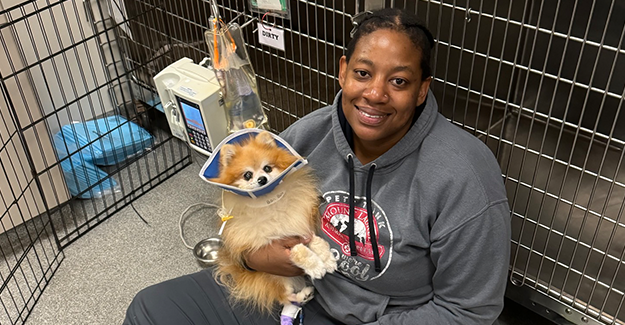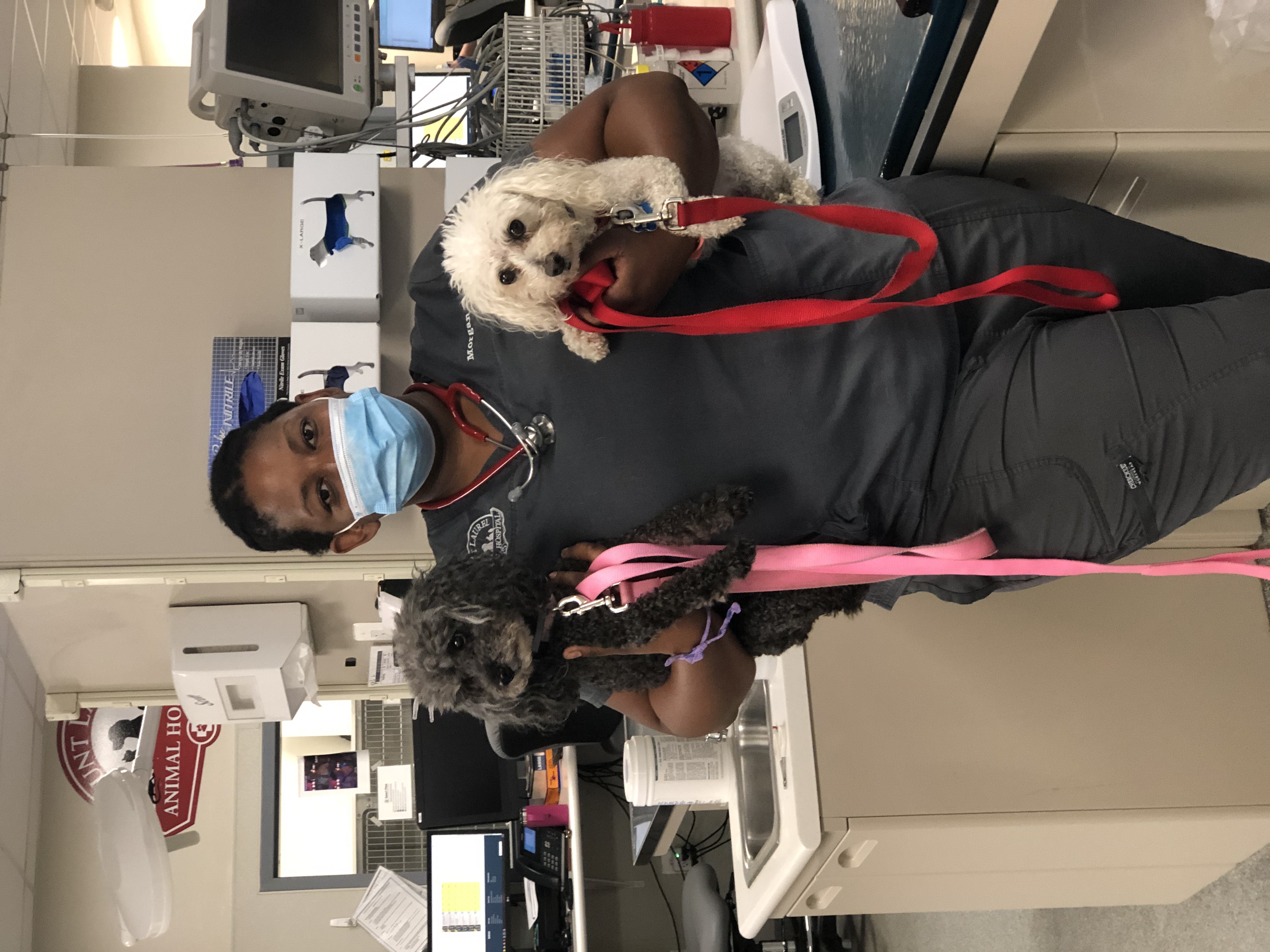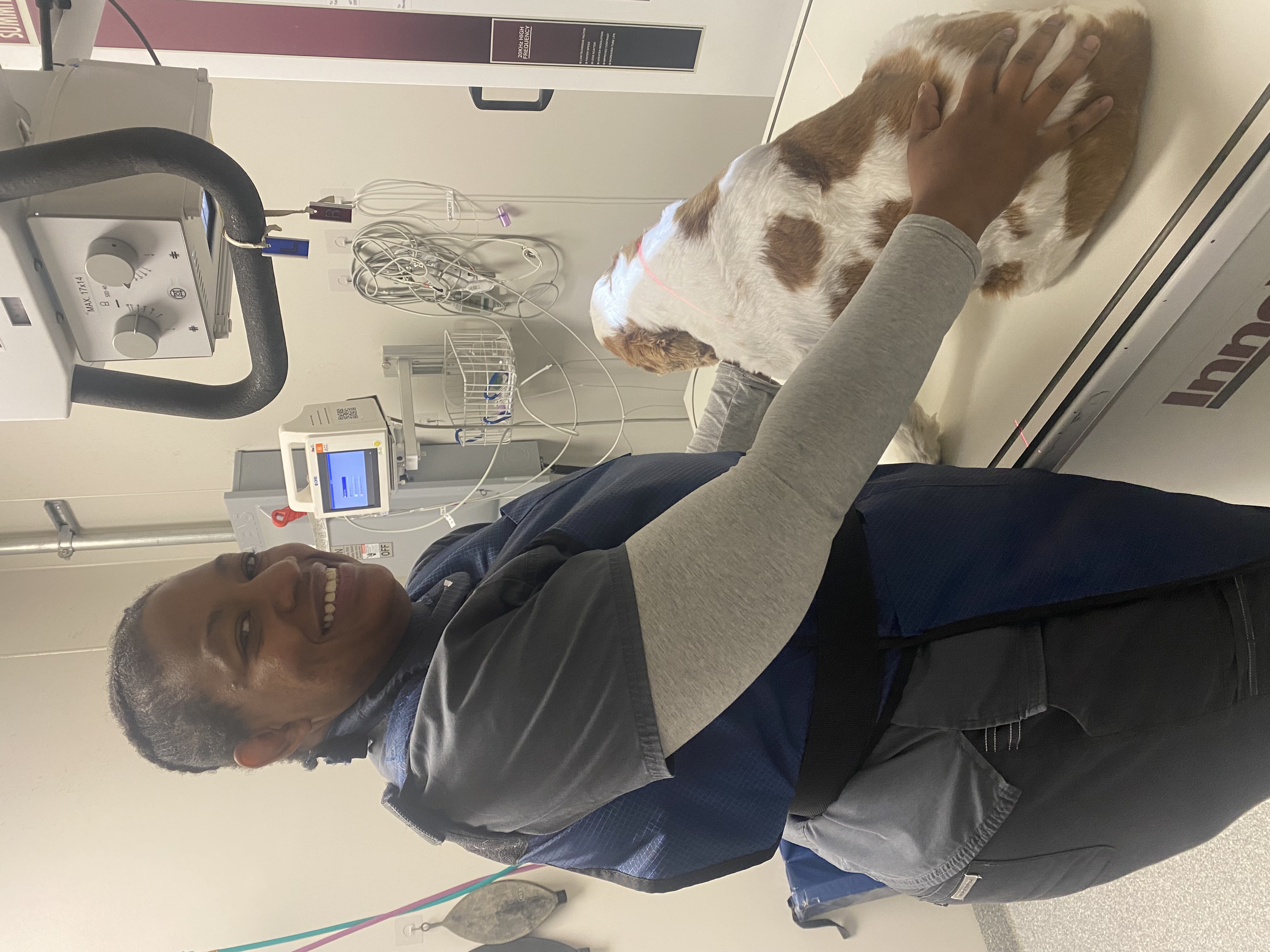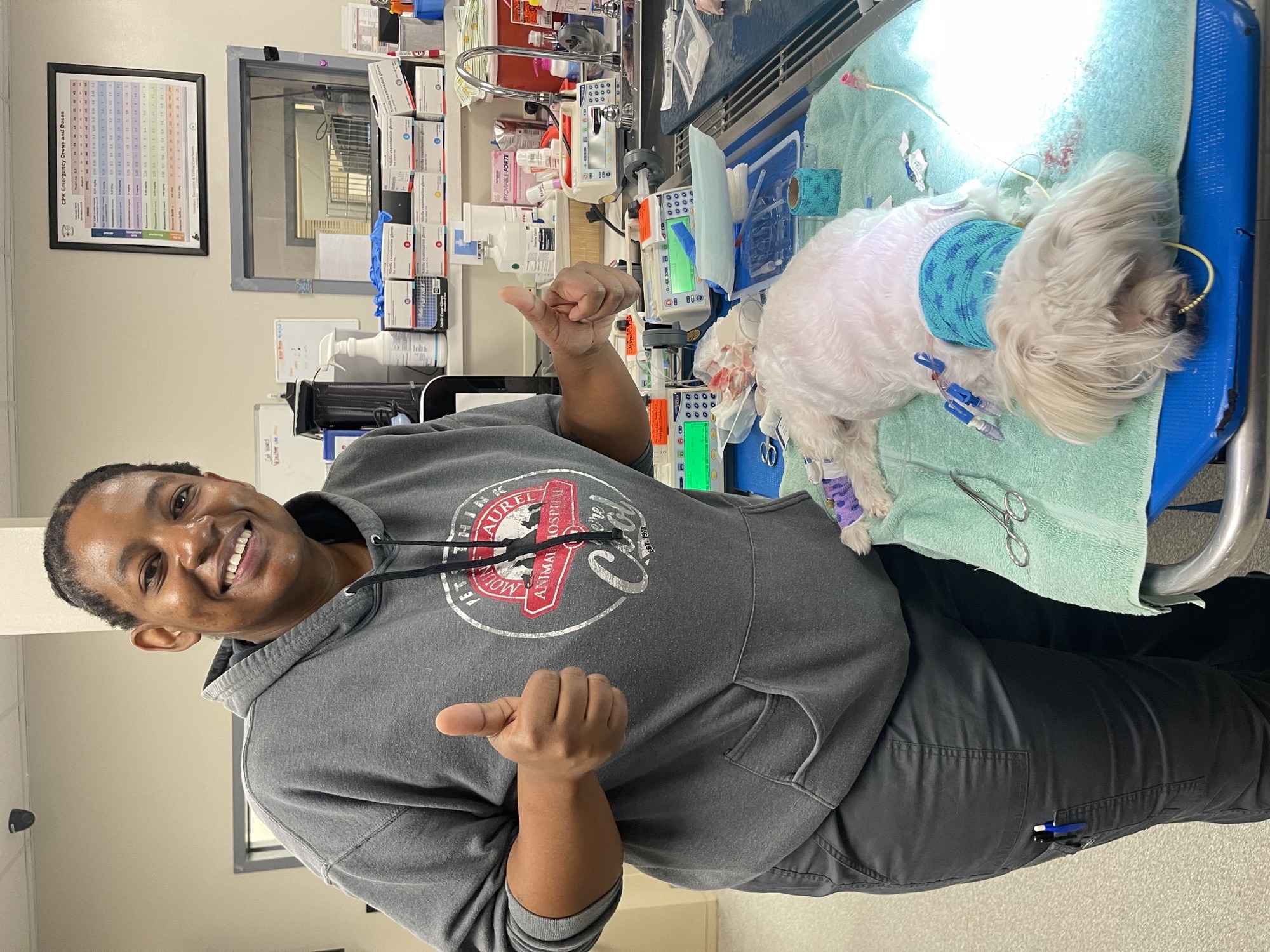Vet Teams IRL: Morgan Rodgers, BS, CVT

Morgan Rodgers, BS, CVT
In my early years of being a veterinary technician, I worked the second shift (2:00 pm–10:00 pm) at a local clinic. I truly felt that this second shift was the best of both worlds. I could have a dentist appointment in the morning and still make it to work without having to switch anything around. That was 16 years ago when I was in my early 20s. Nowadays, I am entering my 40s and if you’re anything like me, you are in bed by 10 o’clock.
However, the evening shift calls to a select few who dedicate their lives to treating patients in the most need while we’re all cozy in bed. In this interview, I delve into the experiences and insights of Morgan Rodgers, BS, CVT, who works as an overnight ICU technician and shares her journey, including some challenges and pivotal moments within the field of veterinary medicine.
Tasha McNerney (TM): To start, could you tell me about your tenure in the veterinary field and what initially drew you to this profession?
Morgan Rodgers (MR): Of course! I've been in the field of veterinary medicine for nearly nine years now. Growing up, I was involved in 4-H and always had a diverse range of pets. This upbringing ignited my love for animals and guided me towards a career dedicated to their wellbeing.
TM: Recently, you achieved the status of a Certified Veterinary Technician (CVT). Could you describe the decision-making process behind pursuing this milestone and why it holds significant meaning for you?
MR: Initially, I hesitated despite holding a bachelor's in animal science. However, with encouragement from colleagues and mentors, I embarked on this journey. Passing the VTNE (Veterinary Technician National Examination) provided a substantial boost in my self-confidence. It not only propelled my career forward but also positively impacted my personal growth.

TM: Where do you envision the trajectory of veterinary technology as a career heading in the future?
MR: The field is evolving, with innovative minds reshaping how technicians are utilized and advancing their roles. There's an increasing emphasis on mental health support and creating healthier work environments, which is promising for the future.
TM: We are both fortunate to work for a hospital that recognizes the value of the technician staff. This is not the case across the board in veterinary medicine, which is hopefully changing with the availability of new resources like the AAHA 2023 Technician Utilization Guidelines. Can you give me examples of where you think technician utilization could be expanded or improved upon?
MR: There are some amazing people at the forefront of changing the ways technicians are utilized and technician advancement. I am lucky enough to work at a practice where the technical staff are used appropriately, from the assistants up. And training is readily available through in-house CE and assistance from our training department.
We have multiple VTSs on staff that actively help with on-the-floor training, also. In the past, I have worked at hospitals that had little guidance for the staff and not nearly as many training opportunities. In the end, not only does the patient care suffer, but I feel like the disengaged staff is a big factor in burnout. I strongly believe that without the constant "push" from my mentor and having all the resources readily accessible, I wouldn't have made the leap to become licensed.


TM: You've expressed an affinity for the night shift. What makes this period at the clinic particularly special to you?
MR: The night shift fosters an unparalleled sense of camaraderie among the team. With fewer overall staff and a consistent caseload, it necessitates a high level of reliance on each other. It's a period that teaches invaluable lessons in time management, prioritization, and the essence of teamwork.
TM: Lastly, could you share a memorable patient case or a significant learning moment from your career?
MR: Absolutely. Several months ago, I encountered a young pointer who underwent an emergency thoracotomy due to a pyothorax. His critical condition post-surgery was a nerve-wracking moment, but with the collective effort of the team and a slow but steady recovery, he remarkably was walking by morning! His continued progress without setbacks has been immensely rewarding, and his family's regular updates are a testament to the impact we make in the lives of these beloved pets.
For more on tech utilization, see the 2023 AAHA Technician Utilization Guidelines at aaha.org/technician-utilization.
Tasha McNerney BS, CVT, CVPP, VTS (Anesthesia and Analgesia) is a certified veterinary technician and certified veterinary pain practitioner who works closely with the IVAPM to educate the public about animal pain awareness. McNerney has authored numerous articles on anesthesia and analgesia topics for veterinary professionals and pet owners.
Photos courtesy of Morgan Rodgers
Disclaimer: The views expressed, and topics discussed, in any NEWStat column or article are intended to inform, educate, or entertain, and do not represent an official position by the American Animal Hospital Association (AAHA) or its Board of Directors.



